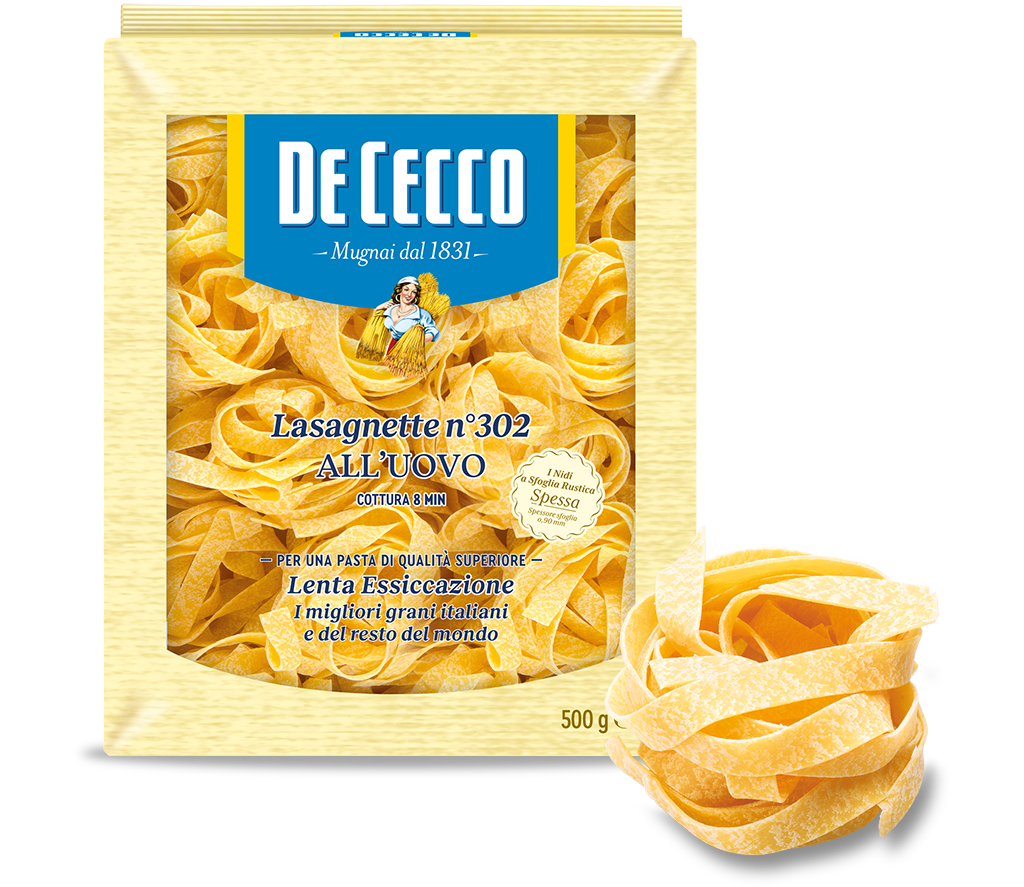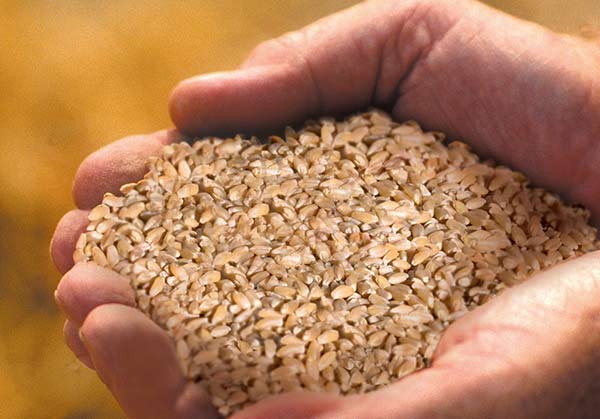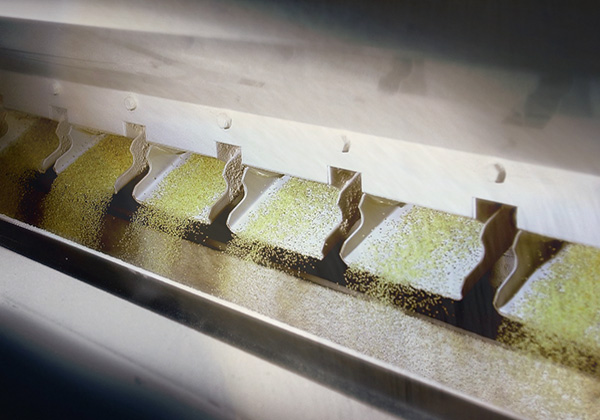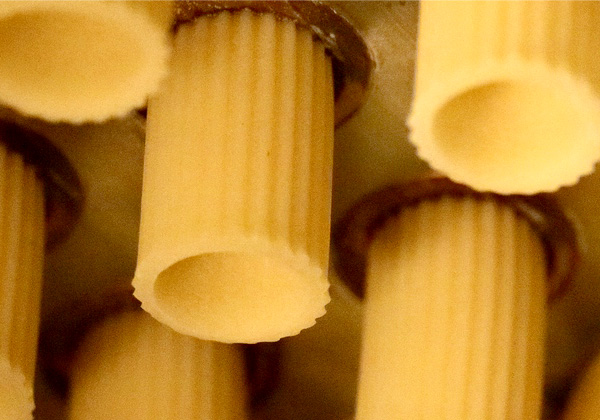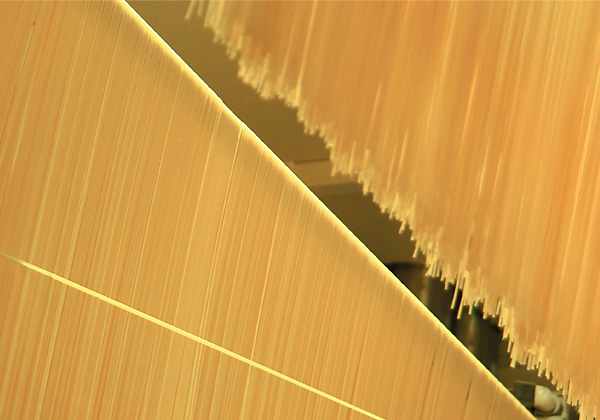Grattata n° 623 all'uovo
The Grattata pasta (gratings) belongs to the minute pasta family to be cooked in broth.
In Friuli Venezia Giulia, in the province of Trieste in particular, but also in other regions such as Tuscany and Basilicata, this type of broth was used as a starter at important meals, like wedding receptions, for example. It was thought that it stimulated the appetite in readiness for the rich, hearty dishes that were to follow.
In Umbria, on the other hand, it was cooked for nursing mothers in goose or pork broth.
Grattata pasta is especially good for preparing clear soups such as broths or consommé, enhanced with croutons or vegetables cut in julienne strips.
This pasta can be used in thick creamy or velvety soups.
Available in 250g packs.
- Cooking time: 7 min
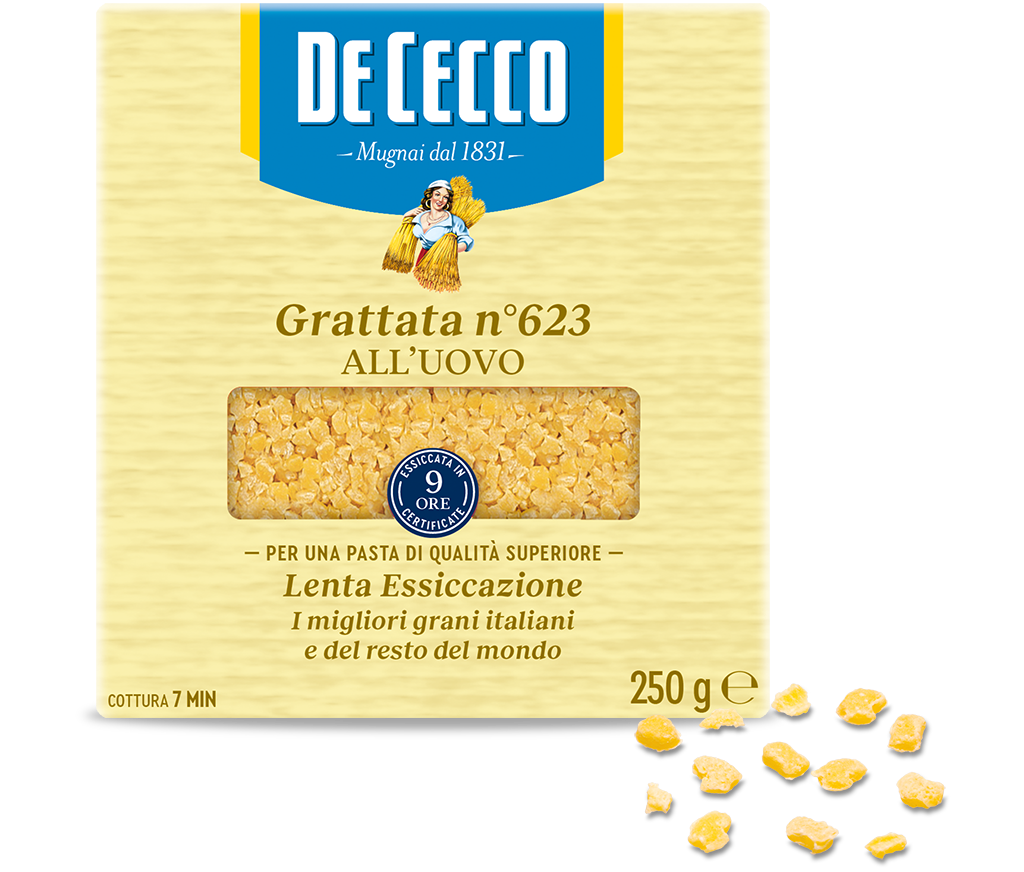
Our method
Lasagnette n° 302 all'uovo
Lasagnette are consumed all over Italy and are part of the long, flat pasta family.
Their shape is particularly suited to the preparation of recipes based on tomato sauce with aromatic herbs or meat-based sauces.
They also go really well with spicy condiments or seafood sauces.
They are part of the culinary traditional in the Liguria region and are excellent for the preparation of first courses based on pesto.
Available in 500g pack.s
